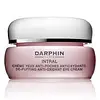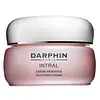What's inside
What's inside
 Key Ingredients
Key Ingredients

 Benefits
Benefits

 Concerns
Concerns

 Ingredients Side-by-side
Ingredients Side-by-side

Water
Skin ConditioningButylene Glycol
HumectantDimethicone
EmollientTrisiloxane
Skin ConditioningGlycerin
HumectantAmmonium Acryloyldimethyltaurate/Vp Copolymer
Trehalose
HumectantSucrose
HumectantPaeonia Suffruticosa Root Extract
Skin ProtectingCrataegus Monogyna Flower Extract
Skin ConditioningThermus Thermophillus Ferment
Skin ConditioningCaffeine
Skin ConditioningAsparagopsis Armata Extract
Skin ProtectingAscophyllum Nodosum Extract
Skin ConditioningPalmaria Palmata Extract
Skin ProtectingArtemia Extract
Skin ConditioningAlgae Extract
EmollientHydrolyzed Rice Extract
Skin ConditioningCucumis Sativus Fruit Extract
EmollientChamomilla Recutita Extract
Skin ConditioningErgothioneine
AntioxidantUrea
BufferingDipotassium Glycyrrhizate
HumectantGlucose
HumectantOleth-10
EmulsifyingTocopheryl Acetate
AntioxidantLauryl PEG-9 Polydimethylsiloxyethyl Dimethicone
Skin ConditioningSorbitol
HumectantAcetyl Glucosamine
Skin ConditioningEthylbisiminomethylguaiacol Manganese Chloride
AntioxidantSodium PCA
HumectantLauryl PCA
HumectantSodium Hyaluronate
HumectantTetrahexyldecyl Ascorbate
AntioxidantCitric Acid
BufferingTromethamine
BufferingTriacetin
AntimicrobialCarbomer
Emulsion StabilisingSorbic Acid
PreservativePolyquaternium-51
Skin ConditioningCyclodextrin
AbsorbentDisodium EDTA
BHT
AntioxidantPotassium Sorbate
PreservativeChlorphenesin
AntimicrobialPhenoxyethanol
PreservativeWater, Butylene Glycol, Dimethicone, Trisiloxane, Glycerin, Ammonium Acryloyldimethyltaurate/Vp Copolymer, Trehalose, Sucrose, Paeonia Suffruticosa Root Extract, Crataegus Monogyna Flower Extract, Thermus Thermophillus Ferment, Caffeine, Asparagopsis Armata Extract, Ascophyllum Nodosum Extract, Palmaria Palmata Extract, Artemia Extract, Algae Extract, Hydrolyzed Rice Extract, Cucumis Sativus Fruit Extract, Chamomilla Recutita Extract, Ergothioneine, Urea, Dipotassium Glycyrrhizate, Glucose, Oleth-10, Tocopheryl Acetate, Lauryl PEG-9 Polydimethylsiloxyethyl Dimethicone, Sorbitol, Acetyl Glucosamine, Ethylbisiminomethylguaiacol Manganese Chloride, Sodium PCA, Lauryl PCA, Sodium Hyaluronate, Tetrahexyldecyl Ascorbate, Citric Acid, Tromethamine, Triacetin, Carbomer, Sorbic Acid, Polyquaternium-51, Cyclodextrin, Disodium EDTA, BHT, Potassium Sorbate, Chlorphenesin, Phenoxyethanol
Water
Skin ConditioningHydrogenated Polydecene
EmollientButyrospermum Parkii Butter
Skin ConditioningPropylene Glycol
HumectantGlyceryl Stearate
EmollientPEG-100 Stearate
Dimethicone
EmollientCetyl Alcohol
EmollientOctyldodecyl Stearoyl Stearate
EmollientPropanediol
SolventTridecyl Stearate
EmollientButylene Glycol
HumectantTridecyl Trimellitate
EmollientChamomilla Recutita Flower Extract
MaskingPaeonia Suffruticosa Root Extract
Skin ProtectingAlteromonas Ferment Extract
Skin ConditioningCrataegus Monogyna Flower Extract
Skin ConditioningPanthenol
Skin ConditioningVanilla Planifolia Fruit Extract
Skin ConditioningRosa Damascena Flower Water
MaskingDipentaerythrityl Hexacaprylate/Hexacaprate
EmulsifyingBisabolol
MaskingStearic Acid
CleansingTocopheryl Acetate
AntioxidantSorbitol
HumectantSodium Hyaluronate
HumectantPalmitic Acid
EmollientSodium PCA
HumectantSodium Polyacrylate
AbsorbentCaprylyl Glycol
EmollientAcrylates/C10-30 Alkyl Acrylate Crosspolymer
Emulsion Stabilising1,2-Hexanediol
Skin ConditioningXanthan Gum
EmulsifyingSodium Hydroxide
BufferingCitronellol
PerfumingGeraniol
PerfumingTetrasodium EDTA
Water, Hydrogenated Polydecene, Butyrospermum Parkii Butter, Propylene Glycol, Glyceryl Stearate, PEG-100 Stearate, Dimethicone, Cetyl Alcohol, Octyldodecyl Stearoyl Stearate, Propanediol, Tridecyl Stearate, Butylene Glycol, Tridecyl Trimellitate, Chamomilla Recutita Flower Extract, Paeonia Suffruticosa Root Extract, Alteromonas Ferment Extract, Crataegus Monogyna Flower Extract, Panthenol, Vanilla Planifolia Fruit Extract, Rosa Damascena Flower Water, Dipentaerythrityl Hexacaprylate/Hexacaprate, Bisabolol, Stearic Acid, Tocopheryl Acetate, Sorbitol, Sodium Hyaluronate, Palmitic Acid, Sodium PCA, Sodium Polyacrylate, Caprylyl Glycol, Acrylates/C10-30 Alkyl Acrylate Crosspolymer, 1,2-Hexanediol, Xanthan Gum, Sodium Hydroxide, Citronellol, Geraniol, Tetrasodium EDTA
Ingredients Explained
These ingredients are found in both products.
Ingredients higher up in an ingredient list are typically present in a larger amount.
Butylene Glycol (or BG) is used within cosmetic products for a few different reasons:
Overall, Butylene Glycol is a safe and well-rounded ingredient that works well with other ingredients.
Though this ingredient works well with most skin types, some people with sensitive skin may experience a reaction such as allergic rashes, closed comedones, or itchiness.
Learn more about Butylene GlycolWe don't have a description for Crataegus Monogyna Flower Extract yet.
Dimethicone is a type of synthetic silicone created from natural materials such as quartz.
What it does:
Dimethicone comes in different viscosities:
Depending on the viscosity, dimethicone has different properties.
Ingredients lists don't always show which type is used, so we recommend reaching out to the brand if you have questions about the viscosity.
This ingredient is unlikely to cause irritation because it does not get absorbed into skin. However, people with silicone allergies should be careful about using this ingredient.
Note: Dimethicone may contribute to pilling. This is because it is not oil or water soluble, so pilling may occur when layered with products. When mixed with heavy oils in a formula, the outcome is also quite greasy.
Learn more about DimethiconePaeonia Suffruticosa Root Extract comes Peony plant. It has anti-inflammatory and antioxidant properties.
Emerging studies also show peony root may help reduce hyperpigmentation.
Ancient Chinese medicine has used peony root to treat dark spots, but studies are looking into this claim more.
Learn more about Paeonia Suffruticosa Root ExtractSodium Hyaluronate is hyaluronic acid's salt form. It is commonly derived from the sodium salt of hyaluronic acid.
Like hyaluronic acid, it is great at holding water and acts as a humectant. This makes it a great skin hydrating ingredient.
Sodium Hyaluronate is naturally occurring in our bodies and is mostly found in eye fluid and joints.
These are some other common types of Hyaluronic Acid:
Learn more about Sodium HyaluronateSodium PCA is the sodium salt of pyroglutamic acid. It is naturally occurring in our skin's natural moisturizing factors where it works to maintain hydration.
The PCA stands for pyrrolidone carboxylic acid, a natural amino acid derivative.
This ingredient has skin conditioning, anti-inflammatory, and humectant properties. Humectants help hydrate your skin by drawing moisture from the air. This helps keep your skin moisturized.
Learn more about Sodium PCASorbitol is a sugar alcohol. It is a hydrating and moisturizing agent created from the reduction process of glucose.
Most sorbitol is usually made from potato starch. It is also found in fruits such as apples and pears.
As a humectant, Sorbitol helps draw water to the skin. This helps keep the skin hydrated. Sorbitol also helps create a thicker texture in products. You might find sorbitol in your toothpaste and other gels.
It is a non-irritating ingredient that is great for those with dry skin.
Sorbitol is a prebiotic. It helps promote the growth of healthy bacteria on your skin. The bacteria on your skin form a microbiome. This microbiome helps protect your skin from infection and harmful bacteria.
Learn more about SorbitolTocopheryl Acetate is AKA Vitamin E. It is an antioxidant and protects your skin from free radicals. Free radicals damage the skin by breaking down collagen.
One study found using Tocopheryl Acetate with Vitamin C decreased the number of sunburned cells.
Tocopheryl Acetate is commonly found in both skincare and dietary supplements.
Learn more about Tocopheryl AcetateWater. It's the most common cosmetic ingredient of all. You'll usually see it at the top of ingredient lists, meaning that it makes up the largest part of the product.
So why is it so popular? Water most often acts as a solvent - this means that it helps dissolve other ingredients into the formulation.
You'll also recognize water as that liquid we all need to stay alive. If you see this, drink a glass of water. Stay hydrated!
Learn more about Water